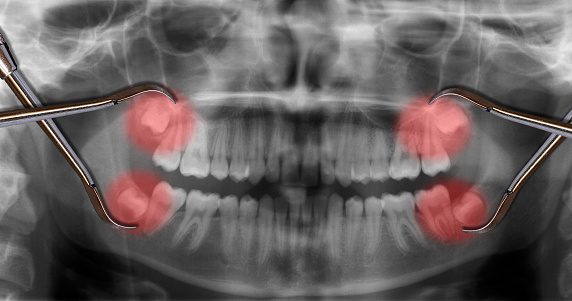Tooth Extraction Elmhurst IL
Your teeth can stand up to a substantial amount of daily wear and tear. While incredibly strong, they are not indestructible. Your teeth can still suffer from physical damage or decay.
Left untreated, tooth decay and dental problems can cause discomfort, pain, threaten the health of other teeth, lead to bone loss in the jaw, and worse.
Restorative dental treatments are sometimes required to preserve strength, prevent infections, and enable normal function. However, sometimes dental restorations are not possible. That is when you may need an extraction procedure.
At Cameo Dental Specialists in Elmhurst IL, our team of specialists provides extractions to patients in the Chicago area, prioritizing healing and saving natural teeth whenever possible.

DAMAGED TEETH? SCHEDULE WITH US IN ELMHURST, IL ASAP!
When your teeth are damaged, it is important to schedule a dental appointment right away, even if the damage does not seem that bad at the time of the injury.
While small damage might only cause a cosmetic issue, it can worsen over time. More significant damage can cause serious issues. The strength of the affected teeth may become compromised, putting the tooth at risk of splitting or shattering.
Sometimes a patient doesn’t realize their oral health is at risk as well, and that has a connection to the health of the entire body.
Damage that extends past the enamel can allow bacteria to enter inside of the tooth. This can lead to a painful infection that not only affects your tooth, but that can put your whole-body health at risk. If you are in the Elmhurst, IL area of Chicago, call us to schedule today!
WHAT ARE MY OPTIONS TO RESTORE DAMAGED TEETH?
At Cameo Dental Specialists, the preferred treatment is to save damaged teeth. There are a few different procedures that can help, depending upon the size and severity of the damage.
Common restorations for damaged teeth include fillings, crowns, and root canals. If the damage is too severe, saving the affected tooth may not be possible. That is when you might require an extraction.
WHEN DO I NEED AN EXTRACTION?
- You have a split or shattered tooth.
- The damage to the tooth travels below the gum line or the pain is completely below the gum line.
- You have severe tooth decay that cannot be treated with a filling or crown.
- There are also a few other situations in which a tooth extraction may be required. In these situations, the teeth are not damaged, but they can still cause issues. These situations include:
- Impacted wisdom teeth.
- Advanced gum disease.
- Needing orthodontic treatment to correct overcrowding.
TYPES OF TOOTH EXTRACTIONS
There are two primary types of tooth extractions: simple extractions and surgical extractions.
- Simple Extractions.
Simple extractions are typically performed on teeth that are visible in the mouth and can be easily accessed by our Elmhurst oral surgeon. These procedures are relatively straightforward and are usually done with a local anesthetic. - Our Chicago oral surgeons use special instruments, including an elevator and forceps, to grasp and gently loosen the tooth from its socket. Once sufficiently loosened, the tooth is carefully removed. Simple extractions are commonly used for patients who have intact crowns and minimal complications.
- Surgical Extractions.
Oral surgery procedures are conducted on teeth that are not easily accessible or have complications such as wisdom tooth impaction (when a tooth doesn’t fully emerge from the gum line) or extensive damage.
WHAT HAPPENS DURING A TOOTH EXTRACTION PROCEDURE?
Patients undergoing surgical extractions may receive local anesthesia and, in some cases, sedation to ensure comfort and relaxation during the procedure.
First, one of our oral surgeons makes an incision in the gum tissue to access the tooth and, if necessary, the dentist may remove bone or cut the tooth into sections for extraction.
After removal, the surgical site is carefully cleaned, and sutures may be used to close the wound. Surgical extractions are commonly required for impacted wisdom teeth or teeth with significant decay.
In addition to these two primary types of tooth extractions, there are variations and specialized procedures that may be used in specific cases. Ultimately, the type of extraction depends on the tooth’s condition, location, and the patient’s specific needs.